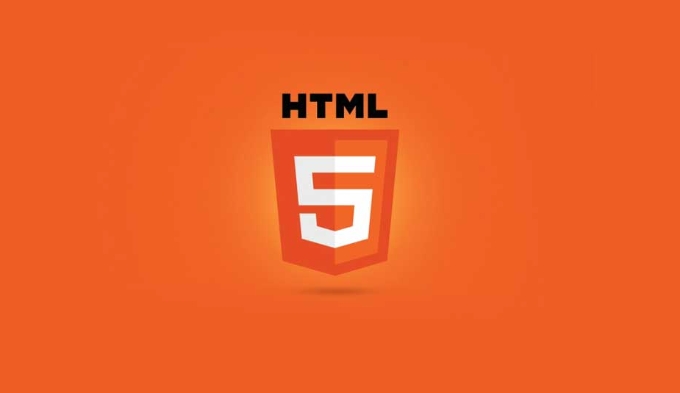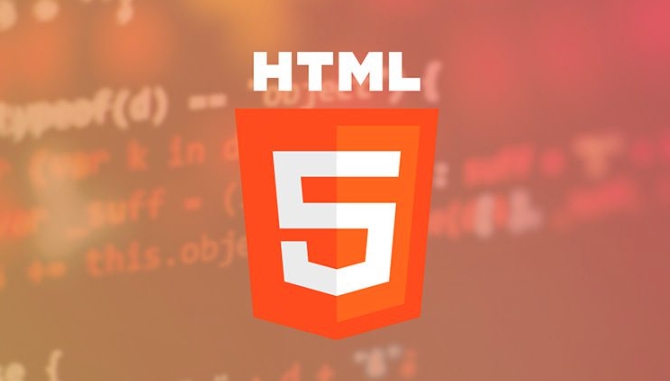The main element is used to wrap the core part of the page that is directly related to the current content and does not contain duplicate content or auxiliary areas. 1. The main tag clearly identifies the main content area of ??the web page; 2. It improves barrier-free experience and allows screen readers to jump quickly; 3. Each page can only have one main element, which should be placed in the body and exist independently; 4. It is often used with semantic tags such as header, nav, footer, etc. to build a clear structure; 5. When using it, avoid nesting unrelated interactive components or content that affects the main line logic.

Using the main element of HTML5 to identify the main content is actually a practical but often overlooked approach. Simply put, the main tag is used to clarify the "most core" content area in the page. It's not for layout, but for semantics and accessibility - allowing screen readers, search engines, and even browser plug-ins to more accurately determine which piece of content is what users are really looking at.

What exactly should the main tag cover?
Many people will get confused at the beginning: Does main equal to the content area? Not exactly. Its function is to wrap the main content of the document or application, that is, the core part directly related to the current page.

For example, in an article page, main should include the title and body, rather than the sidebar, footer, or navigation bar. Notice:
- Don't put content that appears repeatedly on multiple pages into main (such as a universal sidebar or ad)
- Each page can only have one main element
- It is usually inside a body and does not need to be nested in a header or footer
That is, main is "unique" and "independent".

Use main to improve accessibility
For users using screen readers, the main tag is like a fast lane. They can jump directly to the main area via shortcut keys without listening to the navigation menu from scratch every time.
This is actually one of the built-in accessibility features of HTML5. Compared to just relying on class names or divs to build structures, using main is like labeling "Please read me first" to important content.
If you want to optimize further:
- Make sure that the content behind main does not affect the main line logic (such as pop-up windows or floating ads)
- Avoid stuffing too many interactive components into main unless they are at the heart of the current task
- Combining aria-labelledby or title attributes to enhance illustrativeness (although main itself already has an implicit role)
The difference and coordination between main and other semantic tags
Although main is good, it does not exist in isolation. It can only be used with other HTML5 semantic tags to bring about its value.
for example:
- header and main can exist side by side, header places the title information of the page or block
- nav is usually placed in header or aside, not in main
- footer usually means the end of the page after main
A common structure is probably like this:
<header>...</header> <nav>...</nav> <main>...</main> <footer>...</footer>
But it should be noted that main does not have to be close to the header or footer, as long as the overall structure is clear.
Basically that's it. The main tag looks simple, but if used correctly, it can make the web page structure clearer and easier to access. Don’t underestimate this tag. It is not only a semantic optimization, but also a part of improving user experience in modern web development.
The above is the detailed content of Identifying Main Content Using the HTML5 Main Element. For more information, please follow other related articles on the PHP Chinese website!

Hot AI Tools

Undress AI Tool
Undress images for free

Undresser.AI Undress
AI-powered app for creating realistic nude photos

AI Clothes Remover
Online AI tool for removing clothes from photos.

Clothoff.io
AI clothes remover

Video Face Swap
Swap faces in any video effortlessly with our completely free AI face swap tool!

Hot Article

Hot Tools

Notepad++7.3.1
Easy-to-use and free code editor

SublimeText3 Chinese version
Chinese version, very easy to use

Zend Studio 13.0.1
Powerful PHP integrated development environment

Dreamweaver CS6
Visual web development tools

SublimeText3 Mac version
God-level code editing software (SublimeText3)

Hot Topics
 1794
1794
 16
16
 1739
1739
 56
56
 1590
1590
 29
29
 1467
1467
 72
72
 267
267
 587
587
 Adding drag and drop functionality using the HTML5 Drag and Drop API.
Jul 05, 2025 am 02:43 AM
Adding drag and drop functionality using the HTML5 Drag and Drop API.
Jul 05, 2025 am 02:43 AM
The way to add drag and drop functionality to a web page is to use HTML5's DragandDrop API, which is natively supported without additional libraries. The specific steps are as follows: 1. Set the element draggable="true" to enable drag; 2. Listen to dragstart, dragover, drop and dragend events; 3. Set data in dragstart, block default behavior in dragover, and handle logic in drop. In addition, element movement can be achieved through appendChild and file upload can be achieved through e.dataTransfer.files. Note: preventDefault must be called
 How can you animate an SVG with CSS?
Jun 30, 2025 am 02:06 AM
How can you animate an SVG with CSS?
Jun 30, 2025 am 02:06 AM
AnimatingSVGwithCSSispossibleusingkeyframesforbasicanimationsandtransitionsforinteractiveeffects.1.Use@keyframestodefineanimationstagesforpropertieslikescale,opacity,andcolor.2.ApplytheanimationtoSVGelementssuchas,,orviaCSSclasses.3.Forhoverorstate-b
 How to check if a browser can play a specific video format?
Jun 28, 2025 am 02:06 AM
How to check if a browser can play a specific video format?
Jun 28, 2025 am 02:06 AM
To confirm whether the browser can play a specific video format, you can follow the following steps: 1. Check the browser's official documents or CanIuse website to understand the supported formats, such as Chrome supports MP4, WebM, etc., Safari mainly supports MP4; 2. Use HTML5 tag local test to load the video file to see if it can play normally; 3. Upload files with online tools such as VideoJSTechInsights or BrowserStackLive for cross-platform detection. When testing, you need to pay attention to the impact of the encoded version, and you cannot rely solely on the file suffix name to judge compatibility.
 Understanding the autoplay policy changes affecting HTML5 video.
Jul 03, 2025 am 02:34 AM
Understanding the autoplay policy changes affecting HTML5 video.
Jul 03, 2025 am 02:34 AM
The core reason why browsers restrict the automatic playback of HTML5 videos is to improve the user experience and prevent unauthorized sound playback and resource consumption. The main strategies include: 1. When there is no user interaction, audio automatic playback is prohibited by default; 2. Allow mute automatic playback; 3. Audio videos must be played after the user clicks. The methods to achieve compatibility include: setting muted properties, mute first and then play in JS, and waiting for user interaction before playing. Browsers such as Chrome and Safari perform slightly differently on this strategy, but the overall trend is consistent. Developers can optimize the experience by first mute playback and provide an unmute button, monitoring user clicks, and handling playback exceptions. These restrictions are particularly strict on mobile devices, with the aim of avoiding unexpected traffic consumption and multiple videos
 Getting user location with HTML5 geolocation API
Jul 04, 2025 am 02:03 AM
Getting user location with HTML5 geolocation API
Jul 04, 2025 am 02:03 AM
To call GeolocationAPI, you need to use the navigator.geolocation.getCurrentPosition() method, and pay attention to permissions, environment and configuration. First check whether the browser supports API, and then call getCurrentPosition to obtain location information; the user needs to authorize access to the location; the deployment environment should be HTTPS; the accuracy or timeout can be improved through configuration items; the mobile behavior may be limited by device settings; the error type can be identified through error.code and given corresponding prompts in the failed callback to improve user experience and functional stability.
 Handling reconnections and errors with HTML5 Server-Sent Events.
Jul 03, 2025 am 02:28 AM
Handling reconnections and errors with HTML5 Server-Sent Events.
Jul 03, 2025 am 02:28 AM
When using HTML5SSE, the methods to deal with reconnection and errors include: 1. Understand the default reconnection mechanism. EventSource retrys 3 seconds after the connection is interrupted by default. You can customize the interval through the retry field; 2. Listen to the error event to deal with connection failure or parsing errors, distinguish error types and execute corresponding logic, such as network problems relying on automatic reconnection, server errors manually delay reconnection, and authentication failure refresh token; 3. Actively control the reconnection logic, such as manually closing and rebuilding the connection, setting the maximum number of retry times, combining navigator.onLine to judge network status to optimize the retry strategy. These measures can improve application stability and user experience.
 Securing HTML5 web applications against common vulnerabilities
Jul 05, 2025 am 02:48 AM
Securing HTML5 web applications against common vulnerabilities
Jul 05, 2025 am 02:48 AM
The security risks of HTML5 applications need to be paid attention to in front-end development, mainly including XSS attacks, interface security and third-party library risks. 1. Prevent XSS: Escape user input, use textContent, CSP header, input verification, avoid eval() and direct execution of JSON; 2. Protect interface: Use CSRFToken, SameSiteCookie policies, request frequency limits, and sensitive information to encrypt transmission; 3. Secure use of third-party libraries: periodic audit dependencies, use stable versions, reduce external resources, enable SRI verification, ensure that security lines have been built from the early stage of development.
 Using ARIA attributes with HTML5 semantic elements for accessibility
Jul 07, 2025 am 02:54 AM
Using ARIA attributes with HTML5 semantic elements for accessibility
Jul 07, 2025 am 02:54 AM
The reason why ARIA and HTML5 semantic tags are needed is that although HTML5 semantic elements have accessibility meanings, ARIA can supplement semantics and enhance auxiliary technology recognition capabilities. For example, when legacy browsers lack support, components without native tags (such as modal boxes), and state updates need to be dynamically updated, ARIA provides finer granular control. HTML5 elements such as nav, main, aside correspond to ARIArole by default, and do not need to be added manually unless the default behavior needs to be overridden. The situations where ARIA should be added include: 1. Supplement the missing status information, such as using aria-expanded to represent the button expansion/collapse status; 2. Add semantic roles to non-semantic tags, such as using div role to implement tabs and match them




